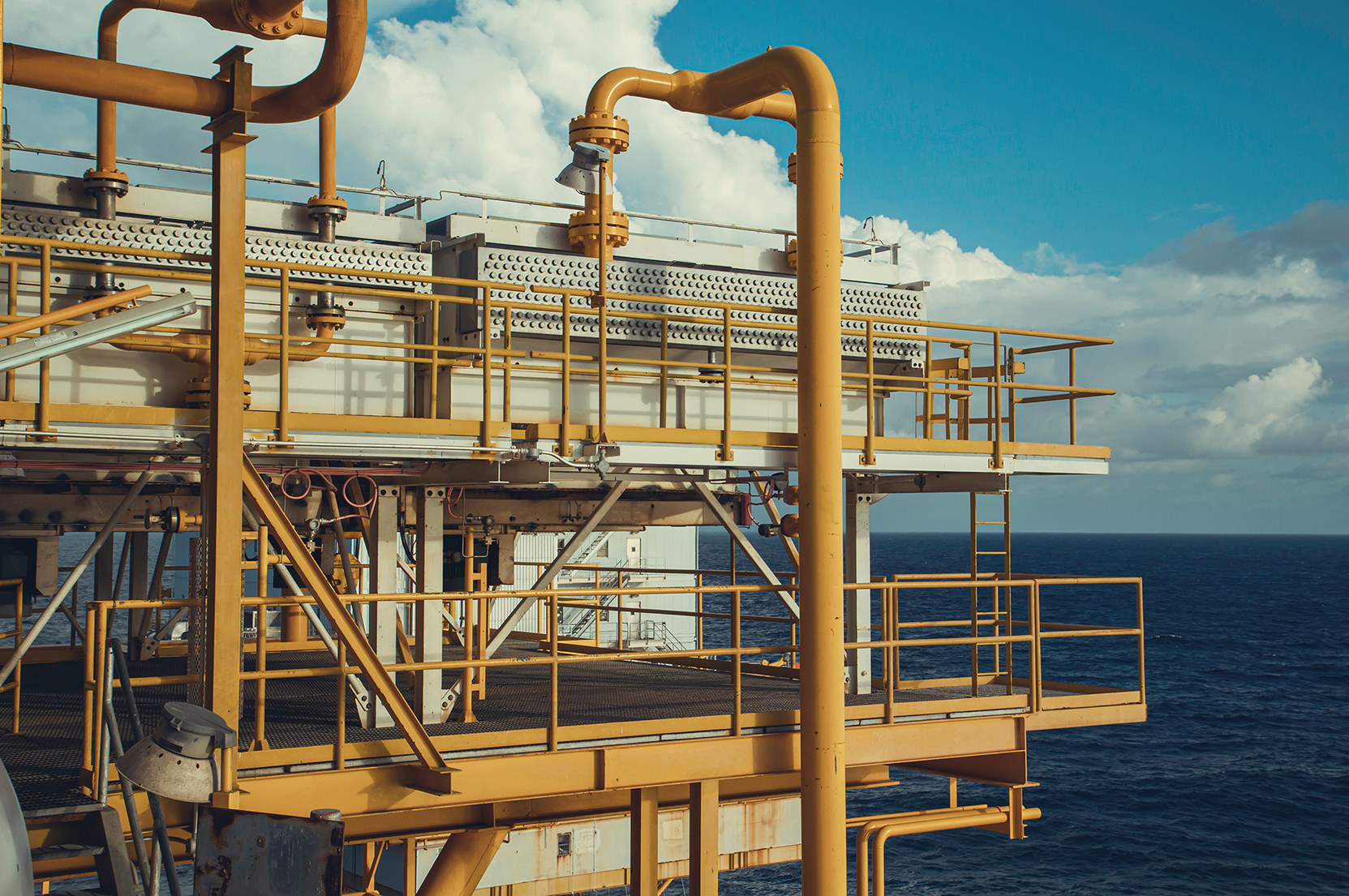The deepwater portion of Gulf of America has shown a continued increase in oil and gas exploration and development. The majority of exploration activity is currently taking place in water depths greater than 500 feet. BSEE engineers within each of the Region’s District Offices review and approve well operations permits. The majority of the exploration oversight is managed by one of the Region’s five District Offices. Engineers review and approve well operations permits while BSEE inspection teams travel offshore each day to inspect drilling rigs and production facilities, and observe equipment testing.
Fixed Platform (FP) consists of a jacket (a tall vertical section made of tubular steel members supported by piles driven into the seabed) with a deck placed on top, providing space for crew quarters, a drilling rig, and production facilities. The fixed platform is economically feasible for installation in water depths up to 1,500 feet.
Compliant Tower (CT) consists of a narrow, flexible tower and a piled foundation that can support a conventional deck for drilling and production operations. Unlike the fixed platform, the compliant tower withstands large lateral forces by sustaining significant lateral deflections, and is usually used in water depths between 1,000 and 2,000 feet.
Tension Leg Platform (TLP) consists of a floating structure held in place by vertical, tensioned tendons connected to the sea floor by pile-secured templates. Tensioned tendons provide for the use of a TLP in a broad water depth range with limited vertical motion. The larger TLP's have been successfully deployed in water depths approaching 4,000 feet.
Mini-Tension Leg Platform (Mini-TLP) is a floating mini-tension leg platform of relatively low cost developed for production of smaller deepwater reserves which would be uneconomic to produce using more conventional deepwater production systems. It can also be used as a utility, satellite, or early production platform for larger deepwater discoveries. The world's first Mini-TLP was installed in the Gulf of America in 1998.
SPAR Platform (SPAR) consists of a large diameter single vertical cylinder supporting a deck. It has a typical fixed platform topside (surface deck with drilling and production equipment), three types of risers (production, drilling, and export), and a hull which is moored using a taut caternary system of six to twenty lines anchored into the seafloor. SPAR's are presently used in water depths up to 3,000 feet, although existing technology can extend its use to water depths as great as 7,500 feet.
Floating Production System (FPS) consists of a semi-submersible unit which is equipped with drilling and production equipment. It is anchored in place with wire rope and chain, or can be dynamically positioned using rotating thrusters. Production from subsea wells is transported to the surface deck through production risers designed to accommodate platform motion. The FPS can be used in a range of water depths from 600 to 7,500 feet.
Subsea System (SS) ranges from single subsea wells producing to a nearby platform, FPS, or TLP to multiple wells producing through a manifold and pipeline system to a distant production facility. These systems are presently used in water depths greater than 5,000 feet.
Floating Production, Storage & Offloading System (FPSO) consists of a large tanker type vessel moored to the seafloor. An FPSO is designed to process and stow production from nearby subsea wells and to periodically offload the stored oil to a smaller shuttle tanker. The shuttle tanker then transports the oil to an onshore facility for further processing. An FPSO may be suited for marginally economic fields located in remote deepwater areas where a pipeline infrastructure does not exist. Currently, there are no FPSO's approved for use in the Gulf of America.



